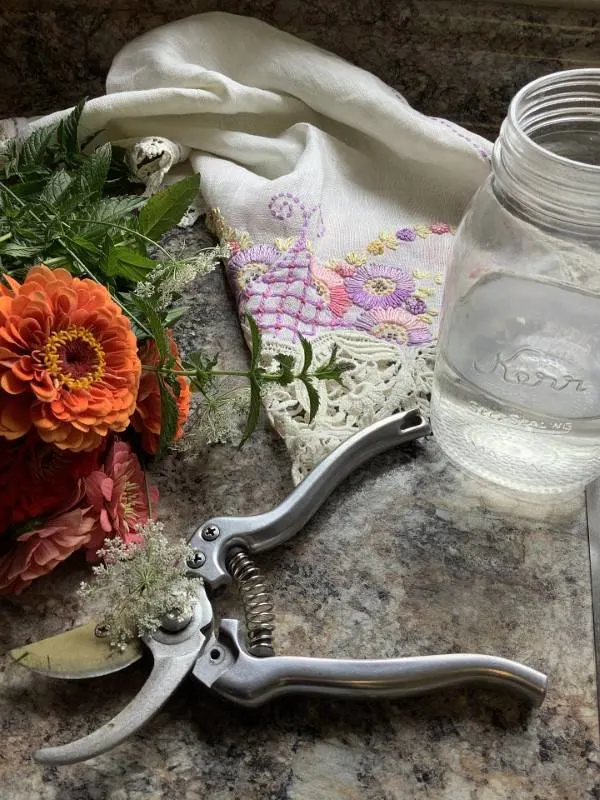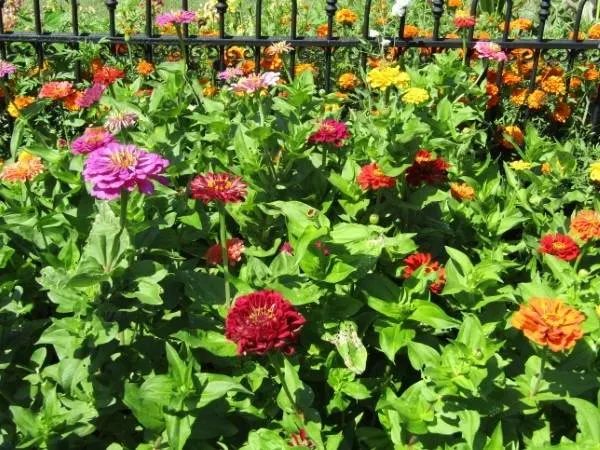One of the essential things to learn as a gardener is how to prune. Pruning helps keep plants healthy and looking their best by removing dead or disease-ridden leaves, stems or growth from a plant.
While some may consider this act cruel, you must not forget that if left on the plant, these parts may spread disease or contaminants throughout the rest of the plant.
Therefore, it is best to remove them at the first sign of trouble – just as you would with human infections! This article will teach you how to prune zinnias.
There are many varieties of zinnias, and they are usually best when you prune them at different times. The first type is the Zinnia elegans or showy Zinnia, which can be found in gardens.
This variety blooms all season long and comes in many colors. Zinnias are well-known for their large, easy-to-grow blossoms. This plant only blooms for one season and then develops seeds, allowing a new plant to take its place.
Zinnias bloom on a single stem and have colorful, daisy-like flowers. They look beautiful in a vase and can even be used as butterfly food. To put Zinnia blossoms in a vase, you must first prune them and ensure that the plant is not harmed in any way.

Equipment You Need
Secateurs or pruning shears
Indoor houseplant owners and even vegetable garden lovers utilize this gadget frequently. Secateurs have many blade kinds.
- Bypass Secateur
It is a two-bladed tool that functions similarly to a scissor. This sort of secateurs’ blades travel through each other to cut your plant, which is why it’s better for delicate stems.
- Anvil Secateur
On the anvil secateurs, the second type of blade can be discovered. It features a single blade that closes when placed on a flat surface. Because the blade does not attach to a delicate stem, this type of blade is only useful for cutting strong stems.
Garden Scissors
This gardening tool is the most ubiquitous and may be found in practically every home. Trimming tiny stems is a breeze with this instrument. Gardening scissors come in a variety of shapes and sizes, including the:
- Huge Softy Scissors
These scissors are used to cut flowers. These scissors have a long reach and are useful for deadheading plants with weak stems.
- Cur and Hold Flower Gatherers
It is another form of gardening scissors. This style of scissors is lightweight and can be used to clip flowers from tall plants or deadhead them.
Garden Gloves
There are 5 types of gardening gloves.
- Leather Gardening Gloves.
- Rubber Gardening Gloves.
- Disposable Gardening Gloves.
- Cotton Gardening Gloves.
- Stretchy Gardening Gloves
Things to Remember
- Zinnia trimming is straightforward, but a few things to keep in mind to avoid damaging your plant.
- The first thing to remember is never to remove all of your plant’s major parts. The growth of the Zinnias is harmed as a result of this.
- It’s tempting to trim Zinnias that are fully bloomed because the plant begins to droop due to the flower’s weight.
- However, rather than eliminating all of your plant’s large blossoms, please give it some support.
- Rather than trimming off all of your plant’s huge blossoms, try removing just a handful.
- Cutting a few blossoms from your plant will allow new flowers to bloom in their place.
- Examine your plant carefully for any discolored or wilted flowers. This is yet another indicator that your Zinnia needs to be pruned.
How To Prune Zinnias?
Garden gloves and gentle handling of the stem are required for proper pruning. You can cut the stem if it feels firm, but you must not cut it if it does not feel hard.

1. Prepping for the Procedure
- Before pruning your Zinnias, make sure they are at least 8 to 12 inches tall (20-30cm).
- Another thing to think about is the time of day. Because the sun rays are less harsh in the morning, it is preferable to prune Zinnias in the morning rather than in the afternoon.
- When pruning your Zinnia, make sure to use sterile scissors and snip off the top four inches below the leaves with sterilized shears.
2. Cutting the Stems
- You can either remove a single stem or two medium-sized stems all at once.
- When you join two medium-sized stems together, you’ll receive several flowers.
- Follow one stem down and see if it joins with another.
- Cut the two stems where they meet to encourage the plant to become bushier.
- Zinnias are annual plants, so you’ll have to replant them once they’ve bloomed.
- You can also let the plant produce its final blossoms of the season before it dies, allowing the seeds to disperse.
- When your plant is still young, pinch it back to encourage it to grow long stems in the future. The key to bright, bushy flowers is deadheading.
- The plant will grow lower to the ground if the lowest stems of your Zinnia are pruned. On the other hand, Zinnias will grow taller from the ground if the higher stems are pruned.
- Zinnias are robust, so whether you prune them lower or higher from the ground won’t make a difference.
3. Maintenance and Care for Pruned Zinnias
- After you’ve pruned your Zinnia, check sure it’s getting enough water. The way your plant grows is determined by the watering schedule you use.
- Water your Zinnia first thing in the morning. This is because watering your Zinnias in the evening prevents the leaves from drying out.
- Let’s say your Zinnia is damp for an extended period. There’s a good probability it’ll get fungal illnesses in this instance.
- When you water your Zinnia in the morning, you ensure that your plant’s leaves do not have any water on them by the evening.
- Zinnias come in a wide range of colors and sizes, and some of them can reach great heights. If you choose a tall-growing Zinnia variety, you will need to provide it with some support as it grows.
- A stake can be driven into the ground and placed near the plant stem. Allow a few inches between the plant and the stake to allow the Zinnia to grow.
Final Remarks
A few simple prunings can boost the duration of Zinnias to around three months. There are other flowers that you can trim, like Marigold and Sunflowers. However, it only takes a few minutes to learn how to prune these plants because their leaves are easy to see.
The key is not letting all of your plant’s blossoms bloom at the same time. Spread out the blooming process so that you’ll have a continuous supply of flowers from pruned plants throughout the growing season.
These tips should help you transform an ordinary garden into a magnificent landscape filled with vibrant colors and unique shapes. You will be amazed at how easy it is to prune Zinnias, and you will be pleased with the change in your garden.
